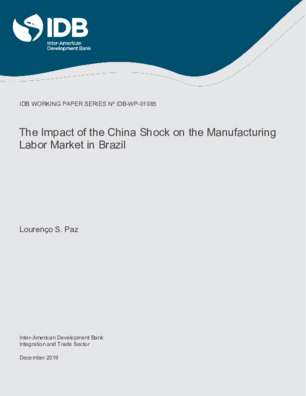The Impact of the China Shock on the Manufacturing Labor Market in Brazil
Date
Dec 2019
The vigorous growth of the Chinese economy together with its growing role in international trade has raised fears of deindustrialization among developing countries. This study draws on the large increase in the international trade exposure of the Brazilian economy from 2000 to 2012 to assess the impacts of trade on its manufacturing sector. In this period, import penetration increased by 25%, and at the same time, Chinas share of import penetration increased from 3% to 20%. Using household survey data that encompasses both formal and informal workers, this papers estimates indicate that higher import penetration reduces the employment level, the share of employment in the population, the hourly wage, the interindustry wage premium, and the share of informal employment. The industry-level results indicate that a rise in import penetration from either China or the rest of the world (ROW) reduced the employment level, hourly wage, and share of informal employment while increasing the interindustry wage premium. The worker-level results suggest that industry-level import penetration from China and the ROW raised workers wages and reduced the likelihood of their being informally employed. The state-level estimates imply that Chinese and ROW imports per worker initially reduced the employment level, the hourly wage, and share of informal employment, but these effects were reversed after 2008. Chinese imports per firm had a negative impact on the share of informal employment and a positive one on average years of schooling. Before 2008, Chinese imports per firm increased the share of workers with both high-school and college educations, and the net impact on both shares became negative after 2008. Estimates using actual imports per worker and per firm did not impact state-level labor-market outcomes. Finally, these effects were modulated by the labor intensity of the industry, the state-level initial share of manufacturing in the gross domestic product, the availability of a sea harbor in the state, and the implementation of the Nova Matriz Econmica policies in 2008.




